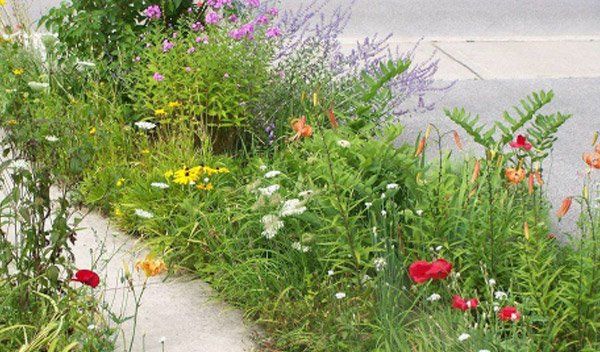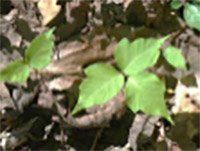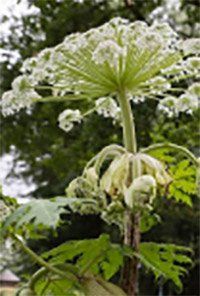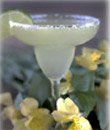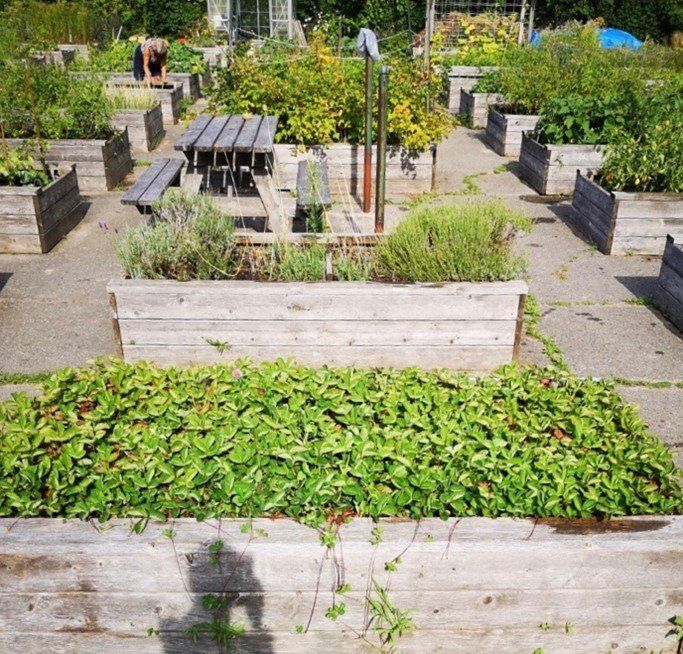Can You Feel the Burn — injury, bruise, bump, painful itchy spot?
Have you ever come in from a glorious day of working in your garden and wondered where that injury, bump, bruise, or painful, itchy spot came from? It happens to some of us all the time and we can usually figure out how we picked up the battle scar.
We are going to visit some injuries that come from less obvious sources than whacking yourself on the shin with your own shovel – those caused by toxins in the garden - some toxic to your plants and some toxic to you.
First let’s cover some vocabulary. There are a few word roots that will come into play here.
- Phyto – having to do with plants
- Photo – having to do with light
- Toxic – a poisonous effect
- Toxin – a poisonous substance
So … when used in combination, these words cover a variety of situations.
- Phyto + toxic: toxic to plants
- Phyto + toxin: a poison that comes from plants
- Photo + toxic: becomes poisonous when exposed to light
- Photo + toxin: a substance that can cause an adverse reaction in the presence of light.
Most gardeners already know that there are some substances that you just don’t want to be putting on your plants. An example of a phytotoxic reaction would be applying an herbicide to weeds and then the weeds dying.
A phototoxic reaction in plants can involve certain minerals that, although beneficial to plants when found within the dark soil in the appropriate trace amounts, can become toxic when exposed to sunlight on the plant’s surface. For instance, many plants including stone fruits, roses and cucurbits are extremely sensitive to preparations containing copper, sulphur or zinc. When applied and then left to toast under the hot sun the plant can suffer leaf burn and leaf drop often enough to kill the plant. There are foliar sprays that contain these minerals, alone or in combination, that are marketed for specific purposes but they are not one-size-fits all preparations. We are not going to cover the specifics of these products here but we will leave the reader with the caution to always read the fine print.
What about threats to the gardener?
We are not going to talk extensively about poison ivy, a plant that exudes a phytotoxin that few people can tolerate. We already know, “Leaves of three; let it be.”
Most of us have already seen or, at least, heard of the biggest toxic plant bully of them all, Heracleum mantegazzianum (Giant hogweed), and hope to never encounter it up close and personal. This Eurasian native was brought to British gardens in the 19th century where it was admired for its sheer magnificence by people unaware of its potential for dire harm. If you do find it on your property or anywhere else in your community it is best to report it to the Invading Species Hotline at 1-800-563-7711.
Over the ensuing decades Giant Hogweed has migrated far and wide. Many of us may wonder what makes this plant so dangerous. Others may wonder if there are other plants out there that pose a similar threat. The quick answer to the last question is, yes; and the longer answer may surprise you.
Plants in the families Umbelliferae, Rutaceae, Fabaceae and Moraceae possess in their makeup a group of chemical substances called furocoumarins (aka furanocoumarins).
Umbelliferae include, in addition to Giant Hogweed, relatives like wild chervil, Queen Anne’s lace and the like; common domestic plants such as celery, parsnips, fennel, dill, and carrots; and quite a few that we grow for strictly ornamental purposes. These plants bear umbels, flat-topped clusters of flowers, when in bloom.
Rutaceae include common citrus such as lemons, limes, oranges and grapefruit, not that we are going to be growing them in our area but we certainly do come in contact with them. Sun-seeking northerners have been burned, literally, while enjoying the sun and a fruity beverage. And remember the days when we used to spray lemon juice on our hair in summer to get that beach blonde look? OK, so maybe you didn’t but some people still do.
Fabaceae include legumes such as peas and beans and about 20,000 other food and ornamental species. Moraceae includes and figs in where furocoumarins appear in the milky sap that the leaves can exude.
While many of these plants contain furocoumarins, we are not trying to make the average home gardener afraid of growing carrots or beans. The furocoumarin content and risk of exposure vary greatly depending on the species, the size of the plant and the manner in which it has been handled, among other factors.
Furocoumarins are believed to be one of the plant’s innate self defense mechanisms. Many furocoumarins are known to be fungicidal and plants use them to do their utmost to repel insects and mammals, humans included. Once juice from the plant penetrates the skins pores, the chemical enters the nucleus of human epithelial cells, bonds with the human DNA causing cell death and destroys the human skin’s ability to protect itself from the sunlight and thus allowing it to burn. This part is the single whammy. Is this sounding like some creepy sci-fi nightmare yet? Once exposed to sunlight, the resulting discomfort can range from symptoms similar to sunburn all the way to the excruciating pain of third degree burns. The double whammy. Increased exposure to sun paired with the heat and sweat of hours of garden work can intensify the damage. Now it’s a triple whammy. Within a day or two of the combination of the furocoumarin laced juice and sunlight on the skin the burns and blisters will begin to form and can stay for weeks, as in the case of Giant Hogweed burns. Your garden variety furocoumarin-containing veggie may not produce a profound effect but, then again, it just might give you a burn that smarts for weeks. A Giant Hogweed burn can take months to heal and the skin may remain sensitive to the sun for many years afterwards.
Who is most susceptible to the effects of furocoumarins?
Anyone can suffer from phototoxic burns. Agricultural workers who regularly handle the vegetables that produce the toxins no matter how small the amounts the plants may produce will be vulnerable to burns because of repeated, prolonged exposure to both the toxin and the sun as will landscape workers for the same reasons.
Also, there are certain medications that do not react well in the presence of furocoumarins. Citrus comes to mind; grapefruit, in particular, is known to increase or decrease the body’s ability to absorb and use certain medications and the consequences can be dire. Individuals on some medications can be more vulnerable to skin reactions when exposed to sunlight. When paired with the potential of furocoumarins in citrus to make the skin more vulnerable to burning in the sun, caution is definitely called for.
Furocoumarins are not the only plant substances that can cause the skin to be more susceptible to burning in sunlight but are certainly the most common to plants that grow in our climate.
What can be done to minimize the risk of burns?
We have been living with and relying on plants for millennia. It has been a good relationship so far and can continue to be so. The plants have been much more at risk from human behaviour than the other way around. Once we understand how some of them defend themselves, we gardeners can certainly protect ourselves from whatever risks the plants may pose.
First of all, and this cannot be stressed enough: if you encounter Giant Hogweed, report it, as one would any other invasive plant. And be prudent. If you don’t know how to remove it safely or just don’t want to do it yourself, consider getting help from someone who knows what to do.
As for protecting yourself from the juices of any plant that can encourage severe sunburning, be prudent. Cover up and wash up. Wear long sleeves, long pants and closed-toe footwear if spending a long time outdoors, whether hiking or working in the garden. You will protect yourself from both the plant juices and the UV rays that, when combined, produce the burns we have described here. When working with plants, wear gloves. If attacking weeds, say with a string trimmer, protect your eyes too with safety glasses, sunglasses or a full face shield.
Wash all plant juices off your skin and hair with soap and water before continuing to spend time in the sun. This includes the lime juice you just squeezed into your well-earned margarita. And, if you’re sitting in the sun, put on an SPF lip gloss before you sip. It could save your lips from sun blisters later.
There are so many injuries that gardeners can inflict upon themselves over the course of a growing season without the plants pitching in. Here’s hoping we can enjoy our gardens and our plants even more this year.
Sources:
A.C. Anderson, accidental Giant Hogweed slayer (personal interview)
Images from Pixabay
Invadingspecies.com
Ontario.ca
Oxford English Dictionary
Sciencedirect.com
Wikipedia.com
Latest Blog Posts
